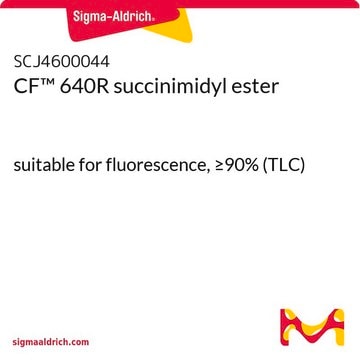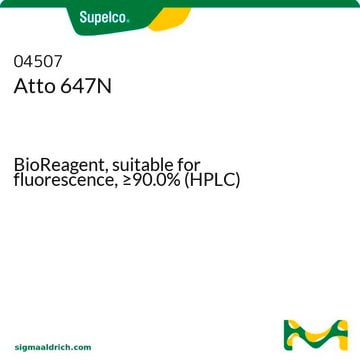06699
Atto 532
BioReagent, suitable for fluorescence, ≥90% (HPCE)
Seleccione un Tamaño
Seleccione un Tamaño
About This Item
Productos recomendados
Línea del producto
BioReagent
Nivel de calidad
Ensayo
≥90% (HPCE)
fabricante / nombre comercial
ATTO-TEC GmbH
fluorescencia
λex 533 nm; λem 560 nm in 0.1 M phosphate pH 7.0
idoneidad
suitable for fluorescence
temp. de almacenamiento
−20°C
Descripción general
Die Abklingzeit der Fluoreszenz beträgt 3.8 ns.
Aplicación
Atto 532 has been conjugated with the secondary antibodies for STED (stimulated emission depletion) microscopy and immunofluorescence studies.[1][2]
Información legal
Código de clase de almacenamiento
11 - Combustible Solids
Clase de riesgo para el agua (WGK)
WGK 3
Punto de inflamabilidad (°F)
Not applicable
Punto de inflamabilidad (°C)
Not applicable
Equipo de protección personal
Eyeshields, Gloves, type N95 (US)
Elija entre una de las versiones más recientes:
¿Ya tiene este producto?
Encuentre la documentación para los productos que ha comprado recientemente en la Biblioteca de documentos.
Los clientes también vieron
Artículos
Fluorescence lifetime measurement is advantageous over intensity-based measurements. Applications include fluorescence lifetime assays, sensing and FLI.
Active Filters
Nuestro equipo de científicos tiene experiencia en todas las áreas de investigación: Ciencias de la vida, Ciencia de los materiales, Síntesis química, Cromatografía, Analítica y muchas otras.
Póngase en contacto con el Servicio técnico








